The debt ceiling is the legal limit on U.S. government borrowing. When it is reached, it can disrupt the economy and financial markets. This article will explain what the debt ceiling is, its history, and the current crisis. You’ll also learn why gold often becomes a popular investment during these times of uncertainty.
Key Takeaways
- The debt ceiling acts as a legal limit on federal borrowing, affecting the government’s ability to fund programs and maintain economic stability.
- Historical precedents show that debt ceiling crises can lead to significant financial turmoil, driving investors to seek safe-haven assets like gold.
- Gold is regarded as a reliable hedge during economic uncertainty, offering diversification benefits and maintaining its value when traditional investments are volatile.
Understanding the Debt Ceiling
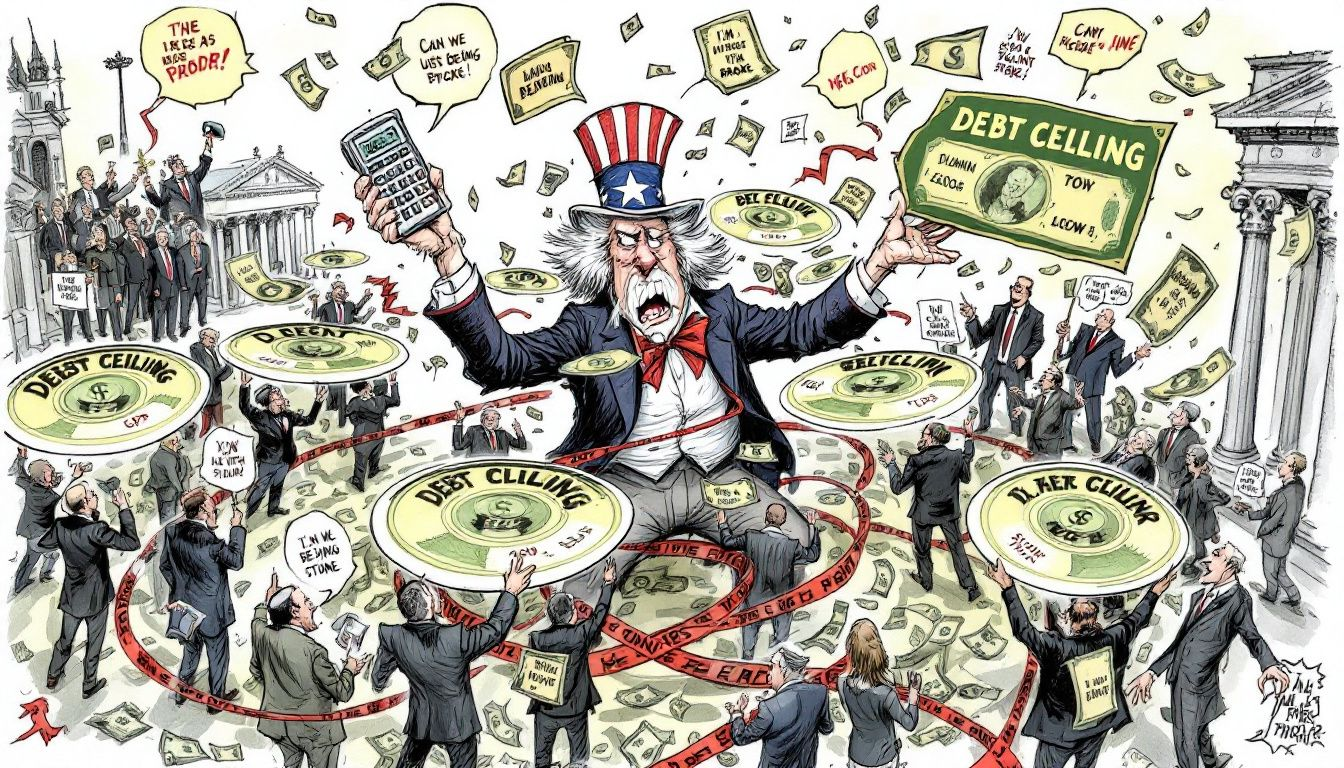
The debt ceiling serves as a legal cap on how much the federal government is allowed to borrow to cover its deficits. Established to streamline Treasury borrowing without requiring individual congressional approval for each loan, the debt ceiling has become a critical component of U.S. fiscal policy. When this limit is reached, the Treasury cannot borrow more, potentially leading to prioritizing certain payments over others.
Raising the debt ceiling does not permit the government to spend beyond what Congress has already approved; it merely allows for the financing of existing obligations.
When the debt ceiling is reached, the Treasury often employs extraordinary measures—temporary cash-saving strategies—to extend operations without raising the limit. These measures, however, are not a permanent solution and only buy time for Congress to act.
Understanding the debt ceiling and its implications helps grasp the broader economic impacts and the potential need for hedging strategies such as gold investments.
Historical Context of the Debt Ceiling
The debt ceiling was first established in 1917 with the Second Liberty Bond Act during World War I, marking the beginning of a new era in U.S. fiscal management. Since then, the U.S. has raised its debt ceiling more than 90 times throughout the 20th century, reflecting its evolving economic and political landscape. A significant change occurred in 1939 when Congress established a comprehensive limit on total public debt, further solidifying the role of the debt ceiling in federal fiscal policy.
One notable instance in the history of the debt ceiling was the 1995 crisis, which resulted in a government shutdown and highlighted the contentious nature of fiscal negotiations. During this period, political parties clashed over federal spending priorities, leading to a significant standoff and a temporary halt in government operations. The crisis underscored the potential for political gridlock to disrupt the functioning of the federal government and the broader economy.
The Gephardt Rule, imposed in 1979, allowed for an automatic increase in the debt ceiling when a budget was passed, aiming to reduce the frequency of such crises. Despite this rule, debt ceiling debates have persisted, with each crisis bringing new challenges and lessons for policymakers and investors alike. These historical contexts help appreciate the current and future implications of debt ceiling standoffs.
Current Debt Ceiling Crisis
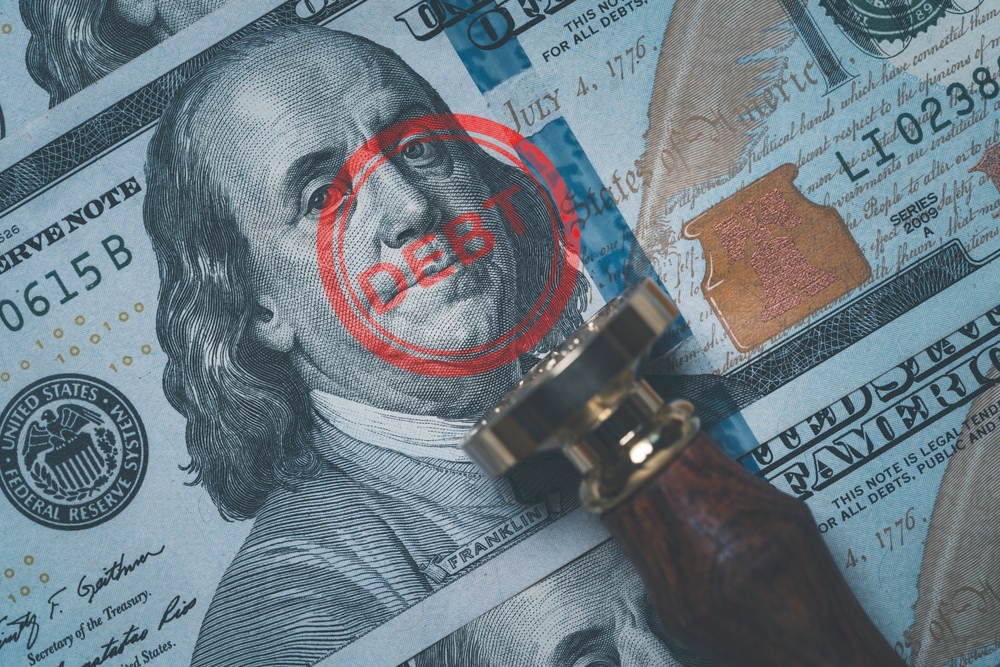
Today’s debt ceiling crisis is marked by intense political battles aimed at controlling federal spending through negotiations linked to the debt limit. This ongoing struggle has led to significant economic uncertainty and has the potential to cause widespread market turmoil. For instance, the 2011 debt ceiling crisis led to a credit rating downgrade for the United States, highlighting the severe consequences of political standoffs.
A prolonged debt ceiling crisis could result in substantial job losses, with estimates suggesting that over 7 million jobs could be at risk. Additionally, failure to raise the debt ceiling could lead to delayed payments for Social Security and other government programs, affecting millions of Americans.
These scenarios highlight the need to explore safe-haven investments, such as gold, to guard against economic instability during uncertain times.
Economic Implications of a Debt Ceiling Standoff
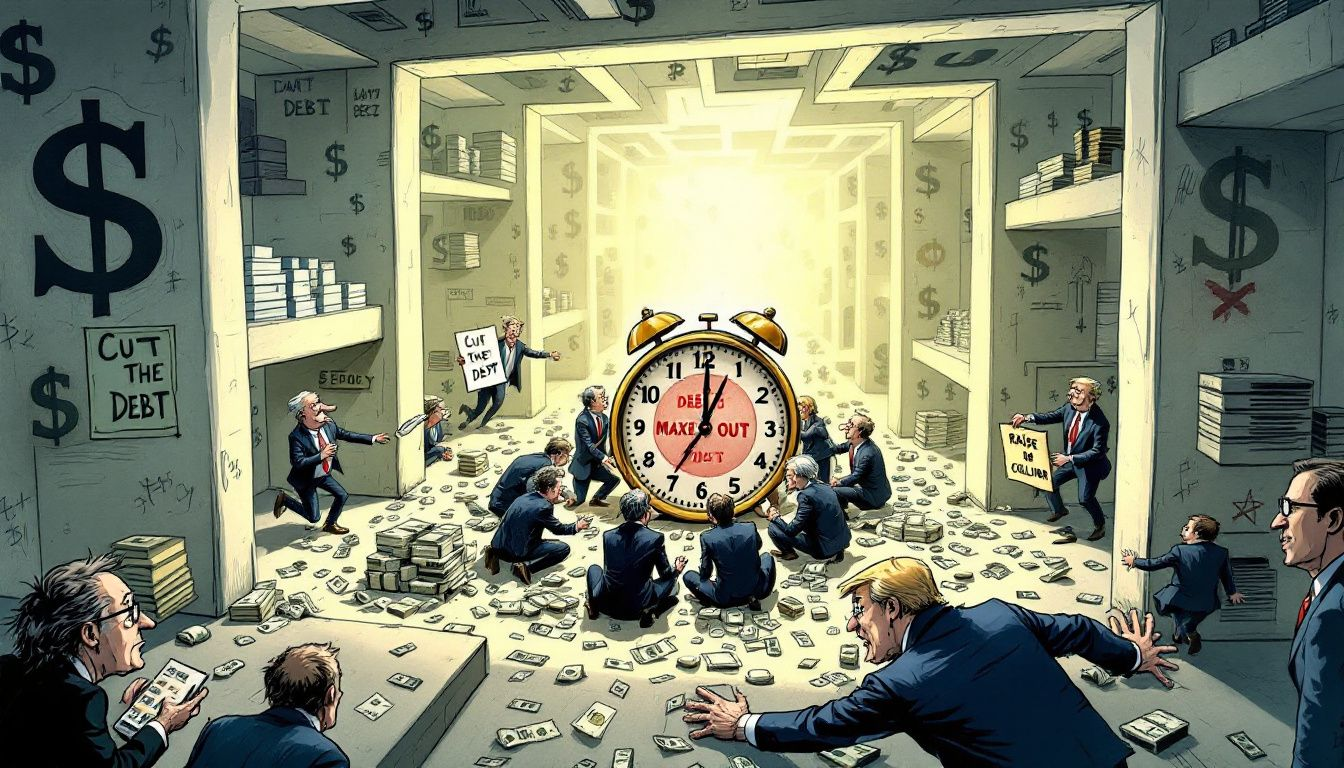
The economic implications of a debt ceiling standoff are profound and multifaceted. Federal spending decisions are closely tied to the outcomes of debt ceiling negotiations, as they dictate the government’s ability to fund essential programs. During these standoffs, the combination of reduced economic growth, altered federal spending patterns, and unsettled financial markets illustrates the serious implications of prolonged debt ceiling debates.
Goldman Sachs predicts a temporary significant decline in economic growth during a government shutdown, followed by a rebound. This pattern highlights the disruptive nature of debt ceiling crises on economic stability. Current economic instability, driven by stringent monetary policies, government shutdown fears, and potential economic contractions, further complicates federal spending decisions.
The potential for a government shutdown can unsettle financial markets, creating a cloud of uncertainty among investors. This scenario underscores the need for reliable investment strategies to hedge against market volatility and protect financial assets during such turbulent times.
Impact on Federal Spending
Federal spending decisions are inextricably linked to debt ceiling negotiations, as these negotiations dictate the government’s ability to fund various programs. For instance, Congress has passed more than $100 billion in disaster aid related to extreme weather events, highlighting significant federal spending independent of regular budgets. Such spending decisions can exacerbate investor anxiety, particularly when the debt limit is reached, leading to concerns over the government’s financial stability.
Analysts often predict that gold prices may rise when the debt approaches its ceiling due to increased government reliance on taxes. This scenario reflects investor anxiety over spending and the overall financial health of the government. Understanding the impact of debt ceiling negotiations on federal spending is critical for making informed investment decisions.
Effect on Financial Markets
The uncertainty surrounding the debt ceiling can trigger substantial volatility in the stock market, similar to the market reactions during past crises. During these uncertain economic periods, many investors seek safe-haven assets to protect their portfolios from market turmoil and volatility. Central banks play a crucial role in stabilizing financial markets during such times, but their actions, along with the federal reserve, can only do so much to mitigate investor concerns.
Market volatility often leads to fluctuating interest rates and investor behavior, further complicating the landscape for traditional investments like stocks and bonds. As a result, many investors turn to alternative investments, such as gold, to hedge against the economic uncertainty and protect their financial assets during these turbulent times.
Gold as a Safe-Haven Investment During Debt Ceiling Uncertainty
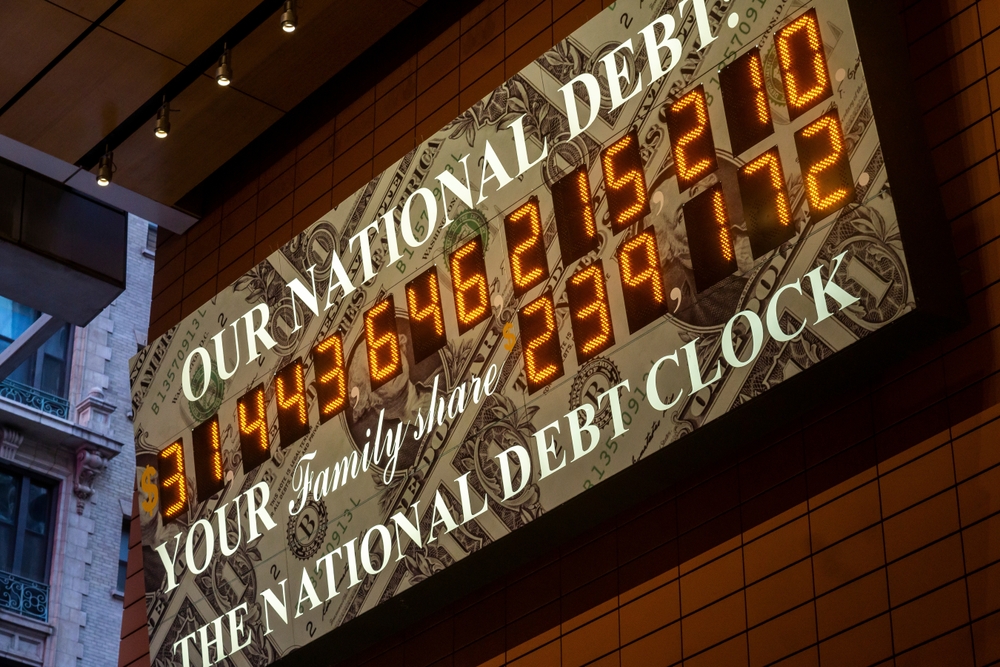
Gold is widely regarded as a safe-haven investment, particularly during periods of economic instability. Its value tends to rise when traditional financial markets falter, making it a sought-after asset during debt ceiling crises. Financial experts suggest that during potential economic crises, such as a U.S. debt default, gold may rise in value as investors seek safe-haven assets. Unlike stocks and bonds, gold’s value does not fluctuate in tandem with economic indicators like interest rates, providing a unique stability.
Investors view gold differently compared to traditional assets because it serves as a hedge against economic uncertainty. The effectiveness of gold as a safe haven can vary depending on prevailing economic conditions. As we explore gold’s historical performance and diversification benefits, it becomes clear why many investors consider it a reliable hedge during debt ceiling crises.
Historical Performance of Gold
Gold prices have shown a tendency to rise during significant economic disruptions, including the COVID-19 pandemic. During this period, gold reached new highs as investors sought security amidst market turmoil, reflecting its consistent role as a safe-haven investment. This historical resilience suggests that gold may remain a viable hedge during potential economic disruptions.
The past performance of gold during debt ceiling crises further underscores its reliability as a safe-haven asset. By examining these historical trends, investors can gain confidence in gold’s ability to protect their portfolios during periods of economic uncertainty.
Diversification Benefits
Incorporating gold into an investment strategy can significantly enhance portfolio stability and risk management. Gold has a low correlation with other financial assets, making it an effective tool for diversification in a portfolio. Most experts recommend that investors allocate 10% or less of their portfolio to gold, providing a balanced approach to risk and reward.
Gold maintains its value over time, protecting investors against inflation and helping preserve purchasing power. Diversifying with gold allows investors to hedge against market volatility and safeguard their financial future.
Physical Gold Investments in IRAs
A Self-Directed IRA allows investors to choose to hold physical gold and other precious metals, enhancing flexibility and control over their retirement savings. Physical gold in a Self-Directed IRA offers significant flexibility, enabling investors to take a distribution or sell at current value. This flexibility makes physical gold investments an appealing option for those looking to diversify their retirement portfolios with a gold ira.
When taking a distribution from their retirement account containing physical gold, individuals can receive the equivalent amount of gold. Accuplan is distinguished among custodians for gold investments because it offers investment specifically in physical gold, providing a tailored solution for investors seeking to protect their retirement savings.
Comparing Gold to Other Investments During Debt Ceiling Crises
Gold acts as a hedge against economic uncertainty by providing a safe-haven investment option. Adding gold to an investment portfolio offers diversification benefits that go beyond traditional asset classes, such as stocks and bonds. Gold stabilizes investment portfolios by reducing the impact of market fluctuations, particularly during economic turmoil.
Historically, there has been no direct link between high government debt levels and the performance of stock or bond markets, suggesting gold’s unique stability during such times. Experts recommend maintaining gold as a small portion of an investment portfolio, typically between 5% to 10%, to benefit from both stability and growth in other assets.
Expert Opinions on Gold and the Debt Ceiling
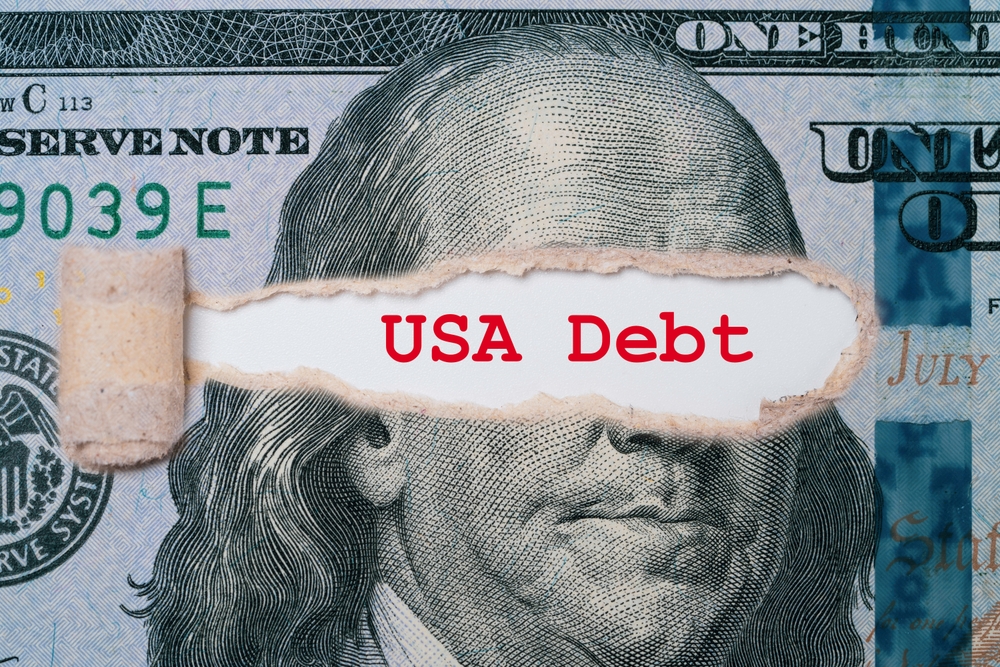
Experts see gold as a safeguard against political and economic instability, particularly during debt ceiling crises. Historical instances show that while gold can be a refuge during debt ceiling crises, its price movements are not always directly correlated with these events. Rising public debt levels can lead investors to lose confidence in the U.S. economy, prompting them to shift funds into gold.
Analysts believe that while avoiding a default could reduce immediate demand for gold, its appeal as a hedge against inflation remains strong. Even with fluctuations, gold’s long-term upward trend is supported by various factors, including economic uncertainties and changes in the value of the U.S. dollar.
Summary
In summary, the debt ceiling remains a critical issue with far-reaching economic implications. Understanding the debt ceiling, its historical context, and its current crisis is essential for making informed investment decisions. Gold has consistently proven to be a reliable hedge during times of economic uncertainty, offering stability and diversification benefits to investors.
As you consider your investment strategy, keeping an eye on the economic landscape and the potential for debt ceiling crises is crucial. Investing in gold, particularly through Gold IRAs, can provide significant tax advantages and protection for your retirement savings. By staying informed and proactive, you can safeguard your financial future against the uncertainties of the debt ceiling.
Frequently Asked Questions
What is the debt ceiling?
The debt ceiling is a legal limit on the amount of money the federal government can borrow to manage its deficits. It was created to simplify Treasury borrowing processes without necessitating specific congressional approvals for each instance.
How does the debt ceiling impact federal spending?
The debt ceiling significantly affects federal spending by limiting the government’s ability to borrow, which can result in the prioritization of certain payments and potentially disrupt funding for programs. Ultimately, reaching the debt limit constrains fiscal flexibility and can lead to adverse economic consequences.
Why is gold considered a safe-haven investment during debt ceiling crises?
Gold is considered a safe-haven investment during debt ceiling crises because its value typically increases when traditional financial markets decline, attracting investors seeking stability. As economic uncertainty grows, gold serves as a reliable asset for wealth preservation.
What are the tax advantages of investing in Gold IRAs?
Investing in Gold IRAs offers the advantage of tax-deferred growth, postponing taxes on earnings until withdrawal, which can significantly enhance the long-term value of retirement savings. This makes Gold IRAs an appealing option for individuals seeking to maximize their retirement investments.
How does gold compare to other investments during debt ceiling crises?
Gold provides unique stability and acts as a safe-haven investment during debt ceiling crises, making it a preferred choice over traditional stocks and bonds in times of economic uncertainty. Its ability to diversify risks further enhances its appeal during such market turmoil.
